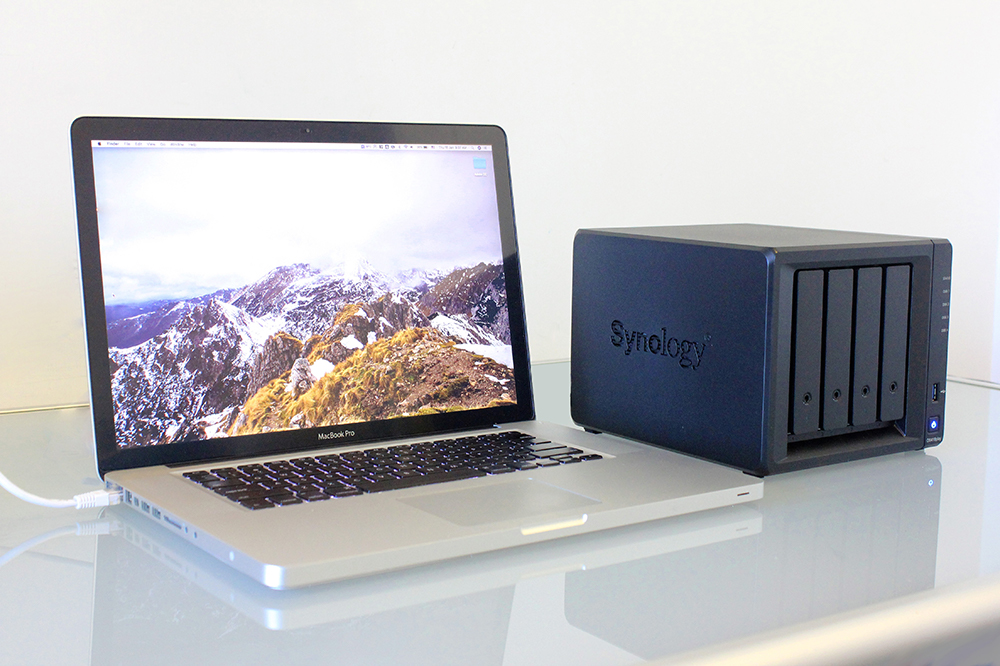Affiliate Disclosure: As an Amazon Associate I earn from qualifying purchases.
Network Attached Storage, or NAS for short, is a convenient method of storing large amounts of data that is easily accessible. Having a NAS setup is a great way to store data on a home network, particularly if you have multiple devices that you wish to have access to it.
A NAS works by creating its own mini-network that only authorized users can access. They are a great option as a centralized location for storing data as they can easily be accessed from anywhere in the world.
What Is a NAS?
A NAS device can be considered a self-contained computer that is connected to your home network with the sole purpose of making data accessible to other devices on the same network.
The operating system and other software that is found within the NAS provides the functionality of storing data, file systems, allowing access to files and the overall management of all of these features.
Although it may be possible to run other pieces of software, a NAS is not designed to carry out tasks that are typically performed on a regular computer. In fact, many NAS devices won’t even allow an external display or keyboard and mouse to be used with it.
They are both controlled and configured over the network, usually by browsing to the devices’ IP address via a web browser.
You may also like: Best NAS for Home Media Streaming: Buyer’s Guide

How Does a NAS Work?
Compared to a simple external hard drive and a fully-fledged cloud-based storage system, a NAS sits somewhere in the middle.
Although it is possible to connect to a NAS directly through a USB cable, you won’t be taking advantage of what makes a NAS different from an external hard drive: the network.
A NAS can be considered to be its own mini-network, only allowing access to those with the correct username and password.
The device will connect to your home network via the router itself, or a network switch if you are using one, and just like with other devices connected to your network, the NAS will be allocated with an IP address that can be used to access it.
Once the NAS has been configured to your liking, it is simply a case of browsing to the IP address that you are given during the setup through your operating system’s file explorer.
If you decided to require authentication to access your NAS, which is definitely recommended, you will be prompted for the username and password at this stage.
Once authenticated, you will have connectivity to the NAS and be able to access all of your files.
A typical NAS used within the home will have between 1 and 4 hard drive bays available to house hard drives, but some come with as many as 8 bays, making them ideal for those wanting to store particularly large amounts of data or to set up more advanced redundancy.
Related article: Best 4 Bay NAS for Home: Buyer’s Guide
Why Would You Need a NAS?
The primary reason to include a NAS as part of your home network setup is to provide a centralized location to store all of your files.
There are alternatives that can work out cheaper than a NAS whilst still achieving the same result of creating a shared storage location on a home network.
An example being that you can simply plug an external hard drive into the USB port on the router, making it accessible to any device connected via the router.
So, why would you want to consider a NAS over this very simple solution?
1. Speed of the Router
By having an external hard drive connected to your router, you will be limited to the speed at which the router is able to read and write to the hard drive.
The USB port found on the router isn’t needed for the router itself to function, so little time, money and effort is put into making it an efficient device, even on the most high-end routers.
Most routers will have slow/read times of around 13 MB/s, so you will be asking a lot from both the router and the hard drive if you are trying to stream high-quality video files, for example.
This is made even worse when you have multiple devices looking to access the data on the hard drive at the same time.
A NAS is specifically designed to allow multiple devices access to the data simultaneously, so there will be no issue should someone want to stream a video whilst another member of the family is backing up their photos.
2. Larger Amounts of Storage
Having a NAS simply allows for much greater storage compared to plugging a single external hard drive into your router.
A NAS will have multiple bays to support the use of multiple hard drives, whereas most routers only have a single USB port, and so only one hard drive can be connected.
You also have the ability to set up redundancy with a NAS, allowing you to hot-swap a faulty hard drive out and have the NAS automatically restore all of the data that has been mirrored to the other drives when you insert a new drive.
3. Access From Anywhere in the World
Having a NAS allows you to access your files from anywhere in the world.
Providing the remote access feature is enabled, you will have access to all of your data without the need to be connected to your home network.
It’s almost like having your own personal cloud storage.

Why Choose a NAS Over Cloud-Based Storage?
In addition to the benefits we described above, there are a few reasons why you may want to choose a NAS to store your data over using a cloud-based storage system.
1. Files May Be Too Large for the Cloud
You may find the files you wish to store in the Cloud are simply too large for it to be used as an effective storage solution.
Photos and videos are common files that many will wish to store in the Cloud but are also, unfortunately, some of the largest.
It isn’t uncommon for a piece of 4k video footage to be many gigabytes in size.
You may soon find yourself reaching the limit of your cloud storage, despite not having actually stored many files.
It will then require you to either invest more money into a plan that provides more storage or possibly even find somewhere else to store your files.
You are then back to square one in that your data is in multiple locations, making it more difficult to manage.
2. No Recurring Monthly Fee
Unlike a NAS which requires a one-off payment for the NAS itself and a few hard drives, using a cloud-based system will usually require a monthly recurring fee, which will differ depending on the system and how much storage you require.
Some, such as Google Drive, will offer a small amount of storage for free, which is useful for storing documents or a small number of photos.
Depending on what you are looking to store, you may find you quickly exceed this storage limit and will have to purchase a new plan.
Although $5 or $10 a month may not seem like much and the plan may provide way more storage than you ever need, consider the cost over a number of years.
With a NAS, you purchase everything once and then not need to worry about putting any more money into data storage.
That is of course unless you find yourself needing to purchase additional hard drives for the NAS as the amount of data you wish to store grows, but even then these drives aren’t typically very expensive.
3. Redundancy
With a NAS, it is possible, and actually very easy to set up redundancy.
This involves using two or more hard drives to mirror each other, so whatever is stored on one drive automatically gets mirrored to the other.
Redundancy essentially allows for a live-instant backup to take place and is a major advantage over using other storage solutions.
Should one hard drive in the NAS fail, all of the data can be accessed as if nothing had happened. When you have a replacement drive, simply insert it into the NAS and the data will begin to mirror once again.
Of course, multiple hard drives will be needed in order to set up redundancy, however, I strongly recommend the investment given how affordable NAS hard drives are, how easy it is to set up redundancy, and for the peace of mind knowing that your data is safe even if a hard drive were to fail.
4. Files Can Be Accessed Instantly
Files stored on a NAS can be accessed much quicker than those in the Cloud because of how they are accessed.
The NAS is connected to your home network and therefore doesn’t require the Internet in order to access the files stored on it.
This also means you are not limited by your download and upload speeds, which can often be the bottleneck for accessing data stored in the Cloud.
Whilst you are sitting there, waiting for several minutes to download a large file from the cloud, you are taking up bandwidth. This could lead to unhappy family members who are simultaneously streaming their favorite TV show on Netflix and encounter issues with buffering.
Files stored on the NAS are on your home network, not the Internet, making access to them instant whilst keeping the rest of the family happy.
Conclusion
A NAS is a device that is connected to your home network with the sole purpose of providing a centralized place to store all of your files and data.
They work by creating their own mini-network which can only be accessed by knowing the correct IP address and the username and password.
They offer many benefits of using more simple solutions like connecting a hard drive to your router, such as being able to store larger amounts of data, offering much faster read and write speeds, and being accessible from anywhere in the world.
Cloud-based storage solutions are commonly used, however, there are several advantages that come with using a NAS instead, which includes there being no recurring monthly fee and the ability to set up redundancy.
Anyone that is serious about storing large amounts of data in a central and easy to access place should consider adding a NAS to their home network setup. Check out my recommended gear page for some of my favorite NAS devices.
